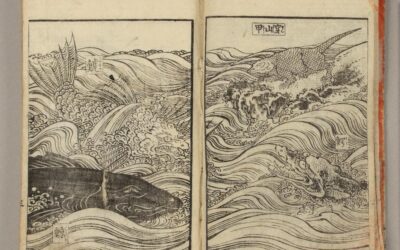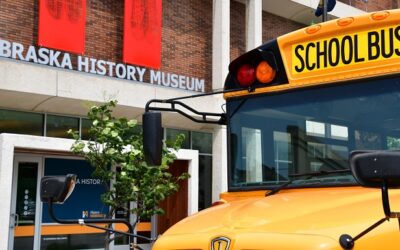Thomas E. Calvert, an engineer at the time the Burlington and Missouri River Railroad was built in Nebraska, described briefly the construction of the road in an 1898 letter to former U.S. Senator Charles F. Manderson: “It is probably not generally known by the people of our state that at the time of the construction of the Road, those immediately in charge, Mr. Cyrus Woodman, V. P. and Managing Director and Mr. Thos. Doane, Chief Engineer, looked upon the venture with considerable doubt, . . . Mr. Woodman in a letter giving his views expressed himself as doubtful if it would pay to extend the Road beyond a point where Hastings now is.”
Calvert recalled that when the railroad had been built to Fort Kearny in 1871 and the locations selected for side tracks, “it seemed necessary that some one make a beginning [and] the Railroad Company arranged to have built at each point four small two-story frame houses. These buildings though quite small appeared to be immense in the mirage so frequent in those hot summer days and could be seen for many miles, there being no trees in sight anywhere or other things that raised above the surface of the plane. The stations so located were named from Crete west with names having first letter in alphabetical order [Crete, Dorchester, Exeter, Fairmont, Grafton, Harvard, Inland, Juniata, Kenesaw, and Lowell]. Later new points sprung up at Friend, Sutton, Saronville, Hastings, and Newark.”
Calvert stated that “during the years 1872 to 1874 (The Grasshopper years) the business was very discouraging especially in the new and sparsely settled country west of the Big Blue River. In 1874 we ran from Crete west, a tri-weekly mixed train going through Crete to Kearney one day and returning the next. As an indication of the business which that train did it is related that on one round trip it did not earn one cent from either freight or passenger business. Westbound it had a quantity of free freight for the grasshopper sufferers in Smith County, Kansas. Eastbound the next day it had one green hide removed from the carcass of a cow killed by the locomotive on its way west the day before and it looked for a long time as though we had indeed built too much R. R.” Calvert concluded by remarking on the later prosperity of the Burlington and the “wonderful change [that] has come over the great American desert.”



